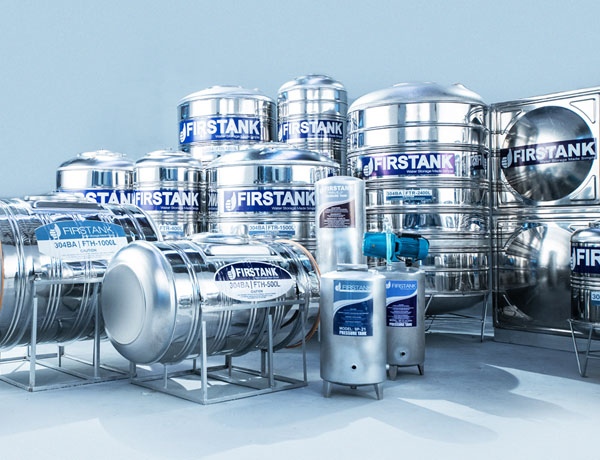The need for a sustainable water tank storage has grown exponentially because of climate change. Water shortage crisis, which occurs almost every year, is felt all around the globe in the past decades. Needless to say, there are a lot of industries and households that are now investing in this basic necessity.
But choosing the right water tank for a particular purpose is a bit tricky. To ensure that you’re purchasing the right unit, it is very important to know the key features of the different types of water storage. So, to keep unnecessary stress at the bay, we’ve cut through the clutter and compiled relevant information that might help you pick the right water tank for your project.
Let’s start with the three different types of water storage tanks that are available in the market.
1. Polyethylene Water Tanks
Polyethylene or plastic water tanks are ideal for projects that don’t need a very large unit. If you don’t want to break the bank, this is also the perfect type for you. They typically come in a dark color to block direct sunlight that causes algae growth.
In terms of durability, these tanks are more impact-resistant compared to steel tanks. Corrosion won’t be a problem because plastic doesn’t rust. They can be easily set up with a self-cleaning system that keeps the inner tank tidy. Applicable in all types of situations including coastal areas, plastic water tanks are usually used for rainwater collection and home water storage.
2. Fiberglass Reinforced Polyester Water Tanks
Although this type of water tank is applicable in all types of situations, it is highly recommended for industrial and chemical storage. It is also used as rainwater storage, dipping tanks for manufacturers, and fire sprinkler reservoirs.
Because it is made of sturdy fiberglass, these tanks afford safe storage for water without the risk of corrosion and bacterial contamination. They are also resistant to extreme temperatures and adverse weather conditions. In terms of market value, polyester water tanks are more budget-friendly than the polyethylene.
3. Stainless-steel Water Tanks
Apart from coastal areas, stainless steel water tanks are suited in all types of situations. This type of water storage contains a high chromium content making it highly resistant to corrosion. It is also very versatile; it can be made soft enough to be easily formed, but through cold work, it can also be made exceptionally strong. Considered as the top choice for water storage, stainless-steel tanks can also store liquid with high temperature (melting point is 1,500 C).
In order to make the wisest choice for your project, here are 4 important factors that you have to consider before purchasing a tank:
1. Price
Of course, you want to get your money’s worth. But the price should never be way beyond your budget. You have an array of tanks to choose from, so pick the best unit that won’t hurt your pocket.
2. Size
Pick the size depending on how much space there is on your site. Most water tank installation companies in the Philippines offer free ocular visits. Make sure to listen to their recommendation.
3. Material
Choose the appropriate material for your tank depending on your site’s location. Consider your surroundings, common weather conditions in the area, and other external factors that might affect the tank.
4. Availability
Have the patience to wait if the model you want is not available on hand. Don’t rush on buying something that is not suited for your budget. Water tank storage providers like Firstank Philippines usually provide a lead time for small tanks that ranges from 3 to 7 days. For bigger tanks, it takes 21 to 30 days normally.

